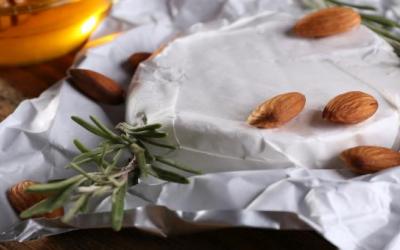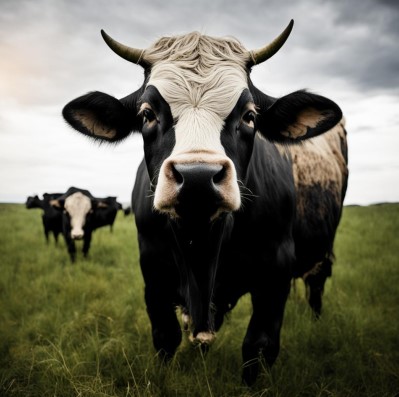There's even Japanese honeysuckle. One of the country's youngest farmers proves that rural business is trendy
Topic news is now, perhaps, one of the youngest farmers in our country. He and his brother grow berries , including such rare ones as honeysuckle. He is also building a petting zoo with unusual pets: glamorous Kamori goats, Vietnamese piglets and Aberdeen Angus bulls. At the same time, he manages to run a blog about rural life, which has more than 38 thousand subscribers. We found out from the agribusinessman how a city dweller can become a farmer and get into the Book of Records of Belarus.
Chervenskoye Pole Berry
27-year-old Nazar Melnikov has lived in the capital his entire life. He has tried himself in a variety of fields: he was a professional athlete until he got injured, woodworking and house construction, and even came up with his own project in medicine. But only when he accidentally got into agriculture did he realize that this is exactly what he wants to do.
- A request was received to supply Belarusian berries to RUSSIA. When we started to figure it out, we realized that the berry niche in our market was practically free. By the way, at that time the demand of Russians was not even half met. As it turned out, there was demand, but there was nothing to offer. My brother Artemy and I decided to go into the berry business ourselves: plant, grow and sell, - the interlocutor smiles and explains that at that time he had no experience of working on the land, as well as a specialized education. - Moreover, our family never had a dacha, and my grandparents had never had a house in the village. I never planted potatoes, let alone berry bushes. My brother and I learned everything in the process, attended conferences, including international ones, consulted with the best specialists in Belarus and abroad.
So four years ago Nazar and Artemy created an agricultural enterprise in the Chervensky district - OOO Agro-Lukoml. Of course, there were some difficulties at first, but today the brothers grow blueberries, black currants, strawberries on almost 90 hectares and rely on a berry that is rare in our area - Japanese honeysuckle. The first fruits of their labor are expected this season.
- There were problems, how could it be otherwise. Probably, first of all, because of inexperience. Experienced farmers helped out, they told us what to do in each of the areas: construction, management of technological processes, including the organization of drip irrigation, - lists Nazar Melnikov and specifies that in the end all the tasks were within reach, the main thing is desire.
Blueberries and strawberries in our country are mostly grown by farmers, and then in the old-fashioned way, without using innovative approaches. Black currant is an eternal crop. From year to year it is in great demand, remaining the most popular berry among industrial processors. Having figured out that the berry plantation niche in Belarus was free, the brothers got down to business: they built a financial model, found an investor who approved their business project, and began to implement it
.
The Vitebsk region was chosen as the location for the future plantation. Several months and considerable investment were spent on preparing the site. However, they never started planting. They realized that it would be difficult not only to cultivate the soil in the peatlands, but also to harvest the berries with a modern combine. They found a suitable site in the Chervensky district, although they lost the season. Therefore, the first planting was carried out only in the fall of last year. But they got into the Book of Records of Belarus in the nomination "The fastest planting of black currants in 10 hours." During this time, a team of eight people managed to plant 8 hectares of berry bushes at once - about 40 thousand seedlings. By the way, if they had done this work manually, they would have managed it no earlier than in a week.
Another thing the brothers became pioneers in was growing honeysuckle. They chose Japanese selection - more frost-resistant than Canadian. True, this crop begins to bear fruit only in the third year after planting.
- You could say that we are breeders of Japanese honeysuckle in Belarus. No one in the country is seriously engaged in it yet. Although the berry is promising, and also incredibly healthy. It looks like grapes, and tastes like blueberries. True, honeysuckle contains much more antioxidants, - says Nazar. - By the way, we also grow blueberries, but not in the traditional way - we plant them not in peat, but in sawdust. And we harvest the crop with a combine, which is new for Belarus.
When asked whether it is difficult to find workers in rural areas, Nazar shakes his HEAD negatively: they say that there were no problems. The agricultural enterprise is fully staffed, and mostly local residents.
- The work is simplified by using modern technologies. For example, at the initial stage there was a big problem with marking the field for future plantings. In order for the berries to grow bush by bush and for the combine not to touch extra branches during harvesting, all the rows must be perfectly even over a length of 400-450 meters, - explains Nazar. - Even the most experienced tractor driver would hardly cope with such a task. Innovations came to the rescue. We purchased GPS sensors and navigation with a satellite connection. Some of our tractors are autonomous, they immediately connect to more than 10 satellites. They drive themselves, draw clear lines.
Nazar and Artemy Melnikov have grandiose plans for the future. We are not talking only about growing berries, but also about processing them into natural fruit drinks and juices. And also about the production of baby food and biologically active supplements based on berries.
- In vain, many believe that you can’t be a businessman in the village - there is only dirt and hard manual labor. Everything is wrong! - assures Nazar. - Using modern technologies, you can create a comfortable environment even in an open field, which is what we have succeeded in.
Zoo with chambers
Despite the fact that the basis of the agro-enterprise is growing berries, the brothers have taken on the implementation of another interesting project - opening a contact farm, where animals can be fed, petted, and photographed with them. Today, under the care of the Melnikovs are rabbits and Vietnamesepiglets , a significant number of goats, including the rare Pakistani Kamori breed, as well as more than 10 Scottish cows and Aberdeen Angus bulls. Having bought the land together with the animals from the previous owner, we decided that they would all stay here. After all, the four-legged inhabitants of the farm are its main decoration and the basis of the future zoo.
- We are probably the only breeders of Kamori goats in the country. This is a dairy breed: they give more than eight liters of MILK per day. They have a calm character, they are friendly towards people. Their main distinguishing feature is long wavy ears, - says Nazar about his pets, stroking the back of a small kid. - He is literally a few weeks old. The name was chosen by subscribers of my blog - Archie.
Cows and bulls of the Aberdeen Angus breed attract no less attention. These animals with silky coal-black wool and a massive physique, when properly fattened, produce MEAT that is called marbled. But the Melnikov brothers have other plans for the Aberdeen Angus.
“Their exterior is important to us, because the animals on our farm are used exclusively for the entertainment of our visitors,” Nazar explains. “We are planning to organize bull riding. There is no such “attraction” in the country yet. Our specialists are currently working on this issue. Of course, the process is not going as fast as we would like, there are many nuances. I think that in a couple of months, bull riding will be available to our guests.”
According to the interlocutor, Angus are considered one of the unruly breeds, but the owners of the estate do not notice this. They are sure that if you give the animals care and affection, they will eventually become completely domesticated - kind and docile.
In order for as many people as possible to learn about the future contact farm, Nazar created a blog on Instagram, where he talks about rural romance and running an agribusiness. One of the videos shows a huge three-hectare plantation where strawberries will give their first harvest, another shares a recipe for cooking a field lunch in a cauldron. The third is dedicated to planting blackcurrant cuttings in pots, and the fourth to Pakistani Kamori goats, in the fifth video the brothers build a paddock for Scottish bulls. At least three to five videos with a plot from real life appear every day, each gaining thousands of likes and hundreds of comments. The number of subscribers to the blog has long exceeded 38 thousand.
- I just want to share unusual workdays with people. Probably, not everyone has such eventful days, - Nazar smiles. - It has been scientifically proven that contact with animals and nature reduces the risk of a huge number of diseases. And I show by my own example that developing a business in the village is fashionable.
Marina VALAKH,
photos by Nadezhda KOSTETSKAYA and from open Internet sources,
"7 days".
The project was created using funds from a targeted collection for the production of national content.
Chervenskoye Pole Berry
27-year-old Nazar Melnikov has lived in the capital his entire life. He has tried himself in a variety of fields: he was a professional athlete until he got injured, woodworking and house construction, and even came up with his own project in medicine. But only when he accidentally got into agriculture did he realize that this is exactly what he wants to do.
- A request was received to supply Belarusian berries to RUSSIA. When we started to figure it out, we realized that the berry niche in our market was practically free. By the way, at that time the demand of Russians was not even half met. As it turned out, there was demand, but there was nothing to offer. My brother Artemy and I decided to go into the berry business ourselves: plant, grow and sell, - the interlocutor smiles and explains that at that time he had no experience of working on the land, as well as a specialized education. - Moreover, our family never had a dacha, and my grandparents had never had a house in the village. I never planted potatoes, let alone berry bushes. My brother and I learned everything in the process, attended conferences, including international ones, consulted with the best specialists in Belarus and abroad.
So four years ago Nazar and Artemy created an agricultural enterprise in the Chervensky district - OOO Agro-Lukoml. Of course, there were some difficulties at first, but today the brothers grow blueberries, black currants, strawberries on almost 90 hectares and rely on a berry that is rare in our area - Japanese honeysuckle. The first fruits of their labor are expected this season.
- There were problems, how could it be otherwise. Probably, first of all, because of inexperience. Experienced farmers helped out, they told us what to do in each of the areas: construction, management of technological processes, including the organization of drip irrigation, - lists Nazar Melnikov and specifies that in the end all the tasks were within reach, the main thing is desire.
Blueberries and strawberries in our country are mostly grown by farmers, and then in the old-fashioned way, without using innovative approaches. Black currant is an eternal crop. From year to year it is in great demand, remaining the most popular berry among industrial processors. Having figured out that the berry plantation niche in Belarus was free, the brothers got down to business: they built a financial model, found an investor who approved their business project, and began to implement it
.
The Vitebsk region was chosen as the location for the future plantation. Several months and considerable investment were spent on preparing the site. However, they never started planting. They realized that it would be difficult not only to cultivate the soil in the peatlands, but also to harvest the berries with a modern combine. They found a suitable site in the Chervensky district, although they lost the season. Therefore, the first planting was carried out only in the fall of last year. But they got into the Book of Records of Belarus in the nomination "The fastest planting of black currants in 10 hours." During this time, a team of eight people managed to plant 8 hectares of berry bushes at once - about 40 thousand seedlings. By the way, if they had done this work manually, they would have managed it no earlier than in a week.
Another thing the brothers became pioneers in was growing honeysuckle. They chose Japanese selection - more frost-resistant than Canadian. True, this crop begins to bear fruit only in the third year after planting.
- You could say that we are breeders of Japanese honeysuckle in Belarus. No one in the country is seriously engaged in it yet. Although the berry is promising, and also incredibly healthy. It looks like grapes, and tastes like blueberries. True, honeysuckle contains much more antioxidants, - says Nazar. - By the way, we also grow blueberries, but not in the traditional way - we plant them not in peat, but in sawdust. And we harvest the crop with a combine, which is new for Belarus.
When asked whether it is difficult to find workers in rural areas, Nazar shakes his HEAD negatively: they say that there were no problems. The agricultural enterprise is fully staffed, and mostly local residents.
- The work is simplified by using modern technologies. For example, at the initial stage there was a big problem with marking the field for future plantings. In order for the berries to grow bush by bush and for the combine not to touch extra branches during harvesting, all the rows must be perfectly even over a length of 400-450 meters, - explains Nazar. - Even the most experienced tractor driver would hardly cope with such a task. Innovations came to the rescue. We purchased GPS sensors and navigation with a satellite connection. Some of our tractors are autonomous, they immediately connect to more than 10 satellites. They drive themselves, draw clear lines.
Nazar and Artemy Melnikov have grandiose plans for the future. We are not talking only about growing berries, but also about processing them into natural fruit drinks and juices. And also about the production of baby food and biologically active supplements based on berries.
- In vain, many believe that you can’t be a businessman in the village - there is only dirt and hard manual labor. Everything is wrong! - assures Nazar. - Using modern technologies, you can create a comfortable environment even in an open field, which is what we have succeeded in.
Zoo with chambers
Despite the fact that the basis of the agro-enterprise is growing berries, the brothers have taken on the implementation of another interesting project - opening a contact farm, where animals can be fed, petted, and photographed with them. Today, under the care of the Melnikovs are rabbits and Vietnamesepiglets , a significant number of goats, including the rare Pakistani Kamori breed, as well as more than 10 Scottish cows and Aberdeen Angus bulls. Having bought the land together with the animals from the previous owner, we decided that they would all stay here. After all, the four-legged inhabitants of the farm are its main decoration and the basis of the future zoo.
- We are probably the only breeders of Kamori goats in the country. This is a dairy breed: they give more than eight liters of MILK per day. They have a calm character, they are friendly towards people. Their main distinguishing feature is long wavy ears, - says Nazar about his pets, stroking the back of a small kid. - He is literally a few weeks old. The name was chosen by subscribers of my blog - Archie.
Cows and bulls of the Aberdeen Angus breed attract no less attention. These animals with silky coal-black wool and a massive physique, when properly fattened, produce MEAT that is called marbled. But the Melnikov brothers have other plans for the Aberdeen Angus.
“Their exterior is important to us, because the animals on our farm are used exclusively for the entertainment of our visitors,” Nazar explains. “We are planning to organize bull riding. There is no such “attraction” in the country yet. Our specialists are currently working on this issue. Of course, the process is not going as fast as we would like, there are many nuances. I think that in a couple of months, bull riding will be available to our guests.”
According to the interlocutor, Angus are considered one of the unruly breeds, but the owners of the estate do not notice this. They are sure that if you give the animals care and affection, they will eventually become completely domesticated - kind and docile.
In order for as many people as possible to learn about the future contact farm, Nazar created a blog on Instagram, where he talks about rural romance and running an agribusiness. One of the videos shows a huge three-hectare plantation where strawberries will give their first harvest, another shares a recipe for cooking a field lunch in a cauldron. The third is dedicated to planting blackcurrant cuttings in pots, and the fourth to Pakistani Kamori goats, in the fifth video the brothers build a paddock for Scottish bulls. At least three to five videos with a plot from real life appear every day, each gaining thousands of likes and hundreds of comments. The number of subscribers to the blog has long exceeded 38 thousand.
- I just want to share unusual workdays with people. Probably, not everyone has such eventful days, - Nazar smiles. - It has been scientifically proven that contact with animals and nature reduces the risk of a huge number of diseases. And I show by my own example that developing a business in the village is fashionable.
Marina VALAKH,
photos by Nadezhda KOSTETSKAYA and from open Internet sources,
"7 days".
The project was created using funds from a targeted collection for the production of national content.




























































